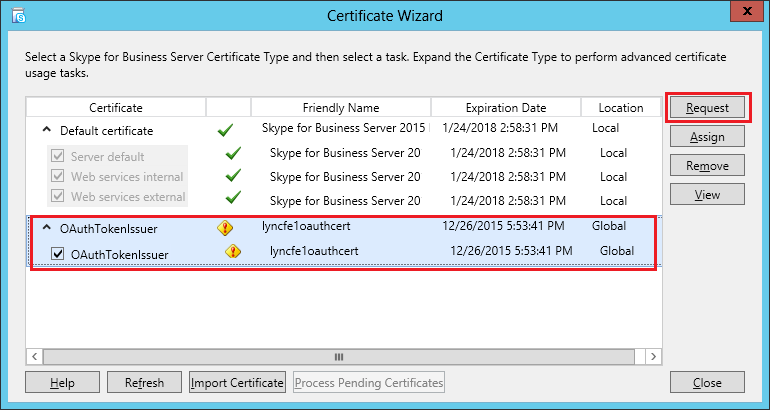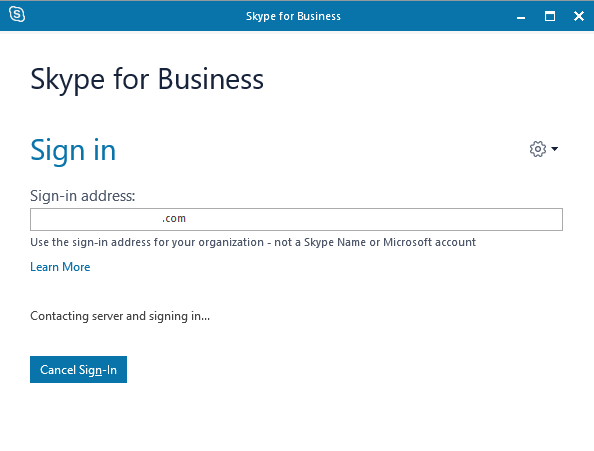

- SKYPE FOR BUSINESS MAC THERE WAS A PROBLEM VERIFYING THE CERTIFICATE FROM THE SERVER UPDATE
- SKYPE FOR BUSINESS MAC THERE WAS A PROBLEM VERIFYING THE CERTIFICATE FROM THE SERVER PASSWORD
- SKYPE FOR BUSINESS MAC THERE WAS A PROBLEM VERIFYING THE CERTIFICATE FROM THE SERVER WINDOWS 8
- SKYPE FOR BUSINESS MAC THERE WAS A PROBLEM VERIFYING THE CERTIFICATE FROM THE SERVER DOWNLOAD
- SKYPE FOR BUSINESS MAC THERE WAS A PROBLEM VERIFYING THE CERTIFICATE FROM THE SERVER WINDOWS

On the affected computers, check the following registry key:

Microsoft cannot guarantee that these problems can be solved. These problems might require that you reinstall the operating system. Warning Serious problems might occur if you modify the registry incorrectly by using Registry Editor or by using another method.
SKYPE FOR BUSINESS MAC THERE WAS A PROBLEM VERIFYING THE CERTIFICATE FROM THE SERVER WINDOWS
Press Windows + R, type the following command, and then press Enter: These steps aren't necessary in Lync 2013 because the steps that were previously mentioned that delete sign in information removes the certificates automatically.įlush the DNS cache. Try to sign in to Skype for Business Online again, and then type your new set of credentials. Locate the set of credentials that's used to connect to Skype for Business Online.Įxpand the set of credentials, and then select Remove from Vault. Open Control Panel, and then click Credential Manager.
SKYPE FOR BUSINESS MAC THERE WAS A PROBLEM VERIFYING THE CERTIFICATE FROM THE SERVER PASSWORD
Be aware that when the user clicks Save Password in Lync 2010, this action also saves the certificate in Windows Certificate Manager.
SKYPE FOR BUSINESS MAC THERE WAS A PROBLEM VERIFYING THE CERTIFICATE FROM THE SERVER DOWNLOAD
If you're using Lync 2010, delete the Skype for Business Online personal certificate and then download a new one. Restart Lync, and then try to sign in to Skype for Business Online.Delete the folder associated with your sign-in address.%USERPROFILE%\Local Settings\Application Data\Microsoft\Communicator\
SKYPE FOR BUSINESS MAC THERE WAS A PROBLEM VERIFYING THE CERTIFICATE FROM THE SERVER WINDOWS 8
Windows Vista, Windows 7 and Windows 8 (excluding Windows 8 RT): Locate the local application data folder:.To delete the endpoint cache, follow these steps: However, sometimes the endpoint can be changed and can cause sign-in to fail. When Lync connects to a specific front-end server, it caches that endpoint to make the sign-in process faster in the future. If the steps earlier in this article don't resolve the issue, try the following methods, as appropriate for your situation: Before you modify it, back up the registry for restoration in case problems occur. Serious problems might occur if you modify the registry incorrectly. In the Services window, check whether the Status of Microsoft Online Services Sign-in Assistant is listed as Running.Ĭlear your cached certificates, credentials and connections.Īdditional troubleshooting steps for Lync 2013 and Lync 2010įollow the steps in this section carefully.Right-click the Start button and select Run.Make sure that Microsoft Online Services Sign-in Assistant is running on Windows Services by following these steps:
SKYPE FOR BUSINESS MAC THERE WAS A PROBLEM VERIFYING THE CERTIFICATE FROM THE SERVER UPDATE
Update the Lync client to the latest version that's available on the Downloads page of the Office 365 portal. If you have trouble signing in to Skype for Business Online, click Delete my sign-in information and Lync 2013 will automatically remove any saved password, certificates, and connection settings for the user account. Solution Resolution for Lync 2013 Delete the sign in informationĭuring the sign in process, Lync 2013 caches your credentials and other information about its connection to Skype for Business Online.

The certificates cannot be acquired or validated.


 0 kommentar(er)
0 kommentar(er)
